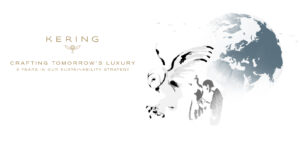Gender Equality
This week’s seminar was about gender equality within businesses. To analyze this topic we took a look at a case study about Dior where it explained how Maria Grazia Chiuri, as creative director, signalled a change in the brand’s commitment to gender equality, as she was the first female creative director in Dior’s history. As the first female in this role, Chiuri used this opportunity to establish a feminist vision for the future of the Dior brand in her work by advocating gender issues and highlighting feminist literature and artwork. One of her first strategies to promote gender equality at Dior was through promoting the work of a range of women creatives in subsequent collections and brand communications. One aspect was her decision to hire female photographers, upholding it by stating that usually fashion campaigns are done by male photographers.
My sustainability hero is Chief Sustainability Officer of Kering, Marie-Claire Daveu. She is a revolutionary in the world of sustainability and has done so much work for the Kering’s luxury fashion group. On a recent interview, she described sustainability as an inherent part of luxury’s DNA. “We like to say that they go hand-inhand, because when you think about luxury, obviously, you think about know-how, and about the quality of the raw materials. But you also assume not only that the raw materials and production methods being used to respect the planet and its natural resources, like their consumption of water, but also that the people who work to produce these magnificent clothes and accessories are being respected too. You expect that sense of respect to be shared all along the supply chain within our brands and our Group”. Kering currently has a 2025 Sustainable Strategy Plan to keep themselves accountable and track their sustainability progress. The Group is working on their environmental footprint in general, which includes their carbon footprint, but also their impacts in terms of nature and water. They like having processes and a very clear criteria and they are aiming to have the shows powered by the most low-carbon form of energy.
“I like to say that luxury and sustainability are intrinsically linked, and that sustainability is in luxury’s DNA” – Marie-Claire Daveu
Link to the recent interview: https://youtu.be/hLkxBhjHfz0







